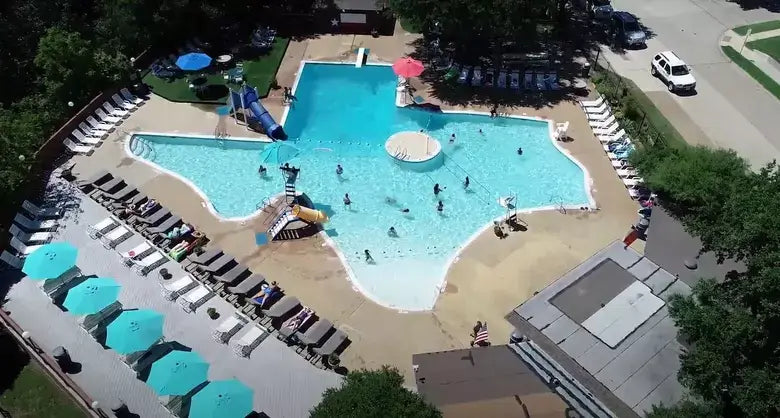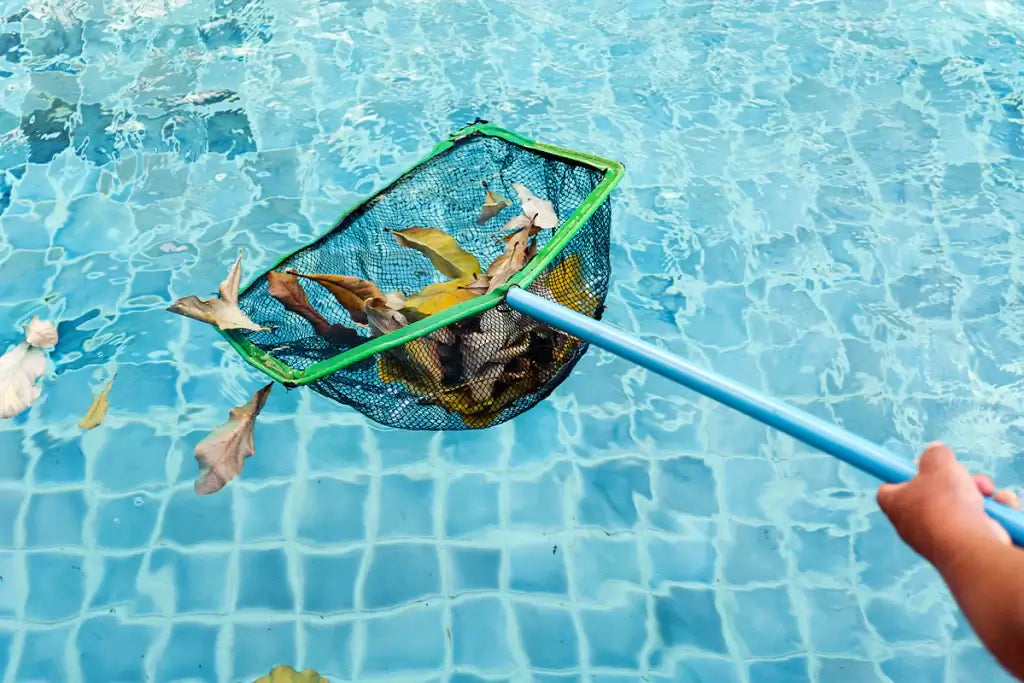How long do you think you should spend cleaning your pool? It's a seemingly innocent question that opens a can of worms for pool owners everywhere. If you're carving out massive chunks of your weekends to keep your aquatic oasis swimmable, you might be stuck in a time warp of outdated pool maintenance practices. The truth about pool cleaning in 2025 might surprise you – and potentially give you back hours of your life every week.
The Traditional Time Sink: What Most Pool Owners Experience
Let's get real for a minute. According to home maintenance surveys, the average pool owner spends between 3-5 hours weekly on maintenance – that's upwards of 260 hours annually, or nearly seven 40-hour workweeks devoted to keeping water clean and chemistry balanced. If you're nodding along with these numbers, you're essentially working a part-time job you never applied for.
Traditional pool maintenance typically includes:
- Skimming surfaces (30-45 minutes weekly)
- Vacuuming (45-60 minutes weekly)
- Brushing walls and steps (30-45 minutes weekly)
- Checking and adjusting chemistry (30 minutes weekly)
- Cleaning filters and baskets (30-45 minutes weekly)
- Shocking and treating algae (variable time, averaging 30 minutes weekly)
This old-school approach to pool maintenance makes about as much sense in 2025 as using a rotary phone to call an Uber. It's functional, sure, but painfully inefficient and completely unnecessary with today's technology.
The Automation Revolution: Redefining "Necessary" Maintenance
Here's a truth bomb that traditional pool service companies don't want you to know: with modern technology, your actual hands-on maintenance time should be closer to 30-60 minutes weekly – not 3-5 hours. The difference comes down to one critical factor: strategic automation.
The cornerstone of this automation revolution is the robotic pool cleaner, specifically advanced models like the Xbenbot Hydro-Puls Robotic Pool Cleaner. Unlike basic suction-side or pressure-side cleaners that simply move debris from pool to filter, true robotic cleaners operate as independent cleaning systems with their own filtration, navigation, and scrubbing capabilities.
The Hydro-Puls doesn't just replace vacuuming – it simultaneously handles tasks that would otherwise require separate manual attention:
- Scrubbing walls and waterlines that you'd normally brush by hand
- Filtering fine particles that would otherwise cloud water
- Circulating water to improve chemical distribution
- Removing biofilm that leads to algae formation
This single automation tool eliminates approximately 70% of traditional maintenance time. The math is simple: when your robot is handling 2-3 hours of weekly cleaning while you're at work, watching TV, or gasp actually enjoying your pool, those hours aren't on your maintenance ledger anymore.
The Psychological Cost of Pool Cleaning: More Than Just Hours
The time cost of pool maintenance goes beyond the actual hours spent actively cleaning. There's a psychological burden – what researchers call "mental load" – that comes with constantly monitoring, planning, and worrying about pool maintenance.
Every glance at your pool that triggers thoughts like "I should really vacuum this weekend" or "Those leaves are building up" creates cognitive weight that diminishes your enjoyment. It transforms your beautiful backyard feature from a source of relaxation into a source of work and obligation.
This mental burden is perhaps the most compelling reason to adopt automation technologies like the Hydro-Puls. When you know your pool is being consistently maintained without your direct involvement, that nagging mental checklist dissolves. Your relationship with your pool fundamentally changes from caretaker to enjoyer.
The Chemistry Equation: Less Physical Cleaning = More Chemical Efficiency
Here's where things get interesting from a time management perspective: proper physical cleaning dramatically reduces the time you need to spend balancing chemicals. It's a virtuous cycle that many pool owners never experience because they're stuck in the traditional maintenance paradigm.
When a robotic cleaner like the Xbenbot Hydro-Puls consistently removes organic material before it can decompose in your water, you're eliminating the primary driver of chemical consumption. Leaves, dead insects, sunscreen, body oils, and other contaminants all consume chlorine as they break down – remove them physically, and your chlorine works more efficiently on actual sanitation rather than waste processing.
Water chemistry experts confirm that pools with consistent physical cleaning typically require:
- 30-50% less chlorine or alternative sanitizers
- Less frequent pH adjustments
- Fewer specialty chemicals to address specific issues
- Less frequent shocking treatments
This translates directly to time savings – testing and adjusting chemistry in a physically clean pool might take 10-15 minutes weekly instead of 30-45 minutes in a pool that's fighting a constant battle against decomposing organic material.
The Seasonal Strategy: Adjusting Cleaning Time to Actual Needs
Another time-wasting mistake many pool owners make is maintaining the same rigid cleaning schedule year-round, regardless of season, usage, or environmental conditions. This one-size-fits-all approach inevitably leads to either:
- Cleaning more than necessary during low-demand periods, or
- Cleaning less than necessary during high-demand periods
A smarter approach adjusts cleaning frequency and duration based on actual conditions. For example:
Spring (Pollen Season)
- Traditional approach: Same weekly schedule despite heavy pollen load
- Smart approach: Increase robotic cleaner cycles during peak pollen weeks, focusing on surface skimming and filtration
Summer (Heavy Usage)
- Traditional approach: Struggle to maintain cleanliness with fixed schedule during peak usage
- Smart approach: Schedule Hydro-Puls for overnight cleaning after heavy use days, preventing contaminant buildup
Fall (Leaf Season)
- Traditional approach: Exhausting manual skimming as leaves constantly fall
- Smart approach: Increase skimmer emptying frequency while maintaining regular robotic cleaning schedule
Winter (Low/No Usage)
- Traditional approach: Continue full maintenance routine despite minimal contamination
- Smart approach: Reduce Hydro-Puls cycles to weekly maintenance, focusing on circulation rather than intensive cleaning
This adaptive approach ensures you're investing cleaning time where it delivers maximum benefit, rather than blindly following a fixed schedule regardless of conditions. The result? The same or better water quality with significantly less time investment.
The Professional Perspective: What Pool Pros Don't Want You to Know
Here's an insider secret from the pool service industry that rarely gets discussed openly: professional pool technicians typically spend only 15-20 minutes actively cleaning a well-maintained residential pool during routine service visits. The rest of their billable hour often involves travel time, setup/breakdown, and honestly, padding to justify service rates.
This isn't a criticism of pool services – they're running businesses with overhead and travel costs to cover. But it illuminates an important truth: the actual necessary cleaning time for a typical residential pool is much lower than most pool owners believe.
Industry studies suggest that with proper equipment and techniques, comprehensive pool maintenance can be completed in under 30 minutes weekly for a typical residential pool. The difference between this and the hours most homeowners spend comes down to three factors:
- Efficiency of tools and methods
- Preventative rather than reactive approach
- Consistency that prevents problem buildup
The Xbenbot Hydro-Puls addresses all three factors simultaneously, bringing professional-level efficiency to homeowner pool care without requiring professional expertise or time commitment.
The Real-World Math: Calculating Your Actual Necessary Cleaning Time
Let's break down what your weekly pool maintenance schedule should look like with modern automation technology:
Necessary hands-on tasks:
- Emptying skimmer and pump baskets: 5 minutes
- Quick water testing: 5 minutes
- Adding chemicals as needed: 5-10 minutes
- Cleaning the robotic cleaner's filter: 5 minutes
- Visual inspection: 2 minutes
Total weekly hands-on time: 22-27 minutes
Compare that to the traditional 3-5 hours without automation. The difference – approximately 2.5 to 4.5 hours weekly – translates to 130-234 hours annually that you're getting back for activities you actually enjoy.
To put that in perspective, that's enough time to:
- Watch the entire Lord of the Rings extended edition trilogy 17-26 times
- Complete a basic certification course in almost any skill
- Train for and run a marathon
- Read approximately 30-50 books
Or, here's a novel idea – you could actually spend that time enjoying your pool rather than maintaining it.
The Investment Perspective: Time is More Valuable Than Money
When evaluating pool maintenance solutions like the Hydro-Puls robotic cleaner, many homeowners focus exclusively on the dollar cost without considering the time value equation. This misses the larger economic picture.
Consider your own hourly value – whether that's your actual earning potential or simply the value you place on your leisure time. Even at a modest $25 per hour, traditional pool maintenance costs you $75-$125 weekly in time value alone. Over a typical 20-week swimming season, that's $1,500-$2,500 of your time invested in routine maintenance.
A high-quality robotic cleaner like the Hydro-Puls represents a one-time investment that delivers returns in the form of reclaimed time season after season. Amortized over a 3-5 year lifespan, the weekly cost of ownership is a fraction of the time value you reclaim.
This isn't just about convenience – it's about making a sound investment in your most valuable and non-renewable resource: time.
The Bottom Line: Your Pool Cleaning Sweet Spot
So, how long should you spend cleaning your pool? With today's technology, the answer is clear: as little time as possible while maintaining proper water quality and safety. For most residential pools, this translates to 20-30 minutes of actual hands-on time weekly, with automated systems handling the heavy lifting.
The Xbenbot Hydro-Puls represents the cornerstone of this minimal-intervention approach, transforming what was once a significant time burden into a minor maintenance task that doesn't interfere with your enjoyment of pool ownership.
The reality is that every minute you spend manually cleaning your pool beyond what's actually necessary is a minute you're not swimming, not relaxing poolside, and not living the pool lifestyle you invested in. In 2025, with robotic technology readily available, spending hours on manual pool maintenance isn't diligence – it's an outdated approach that unnecessarily consumes your precious time.
So the next time someone asks how long you spend cleaning your pool, your answer should be simple: "Almost none – my robot handles that while I'm busy enjoying life." And isn't that the whole point of having a pool in the first place?




Leave a comment
This site is protected by hCaptcha and the hCaptcha Privacy Policy and Terms of Service apply.